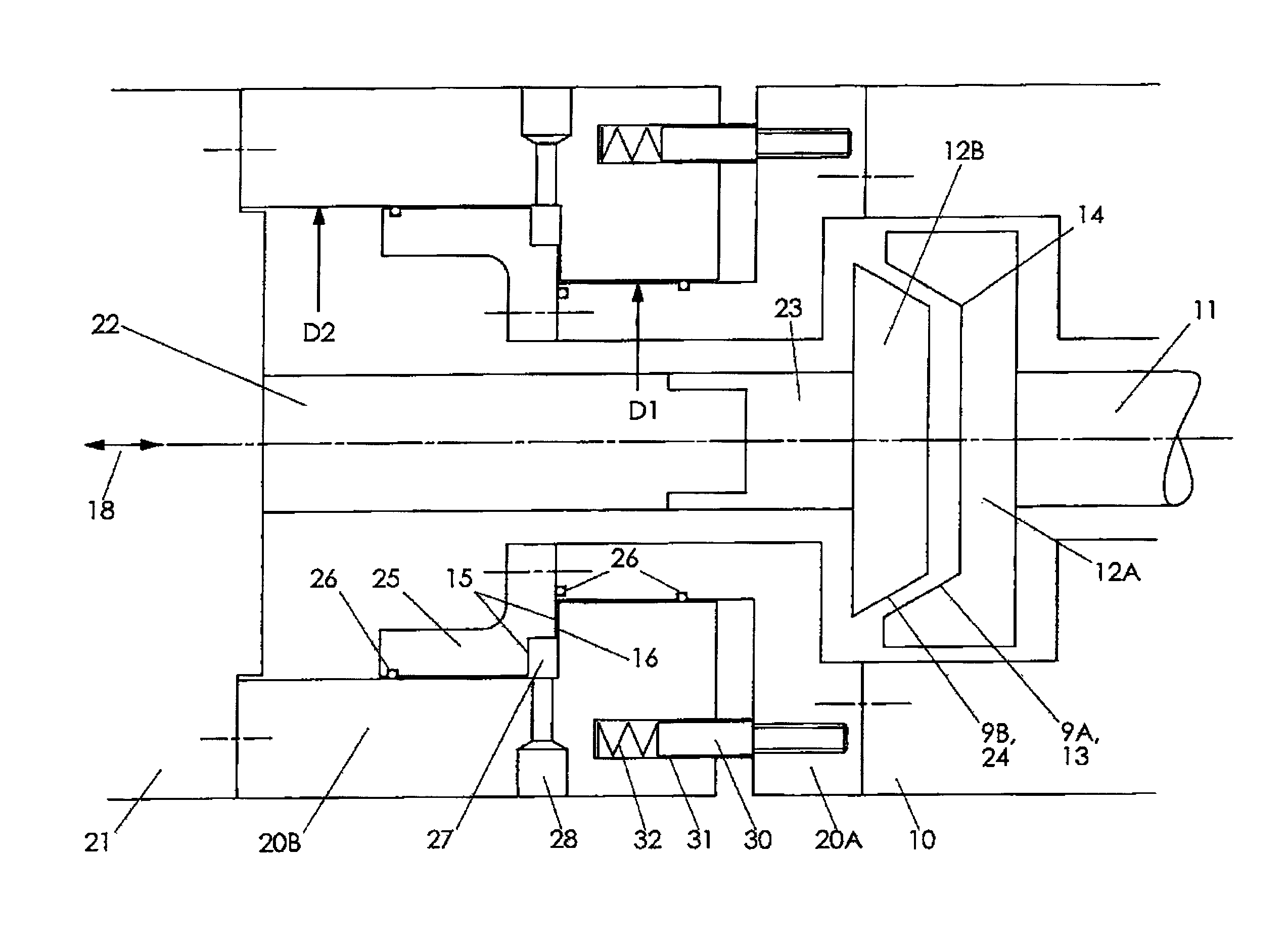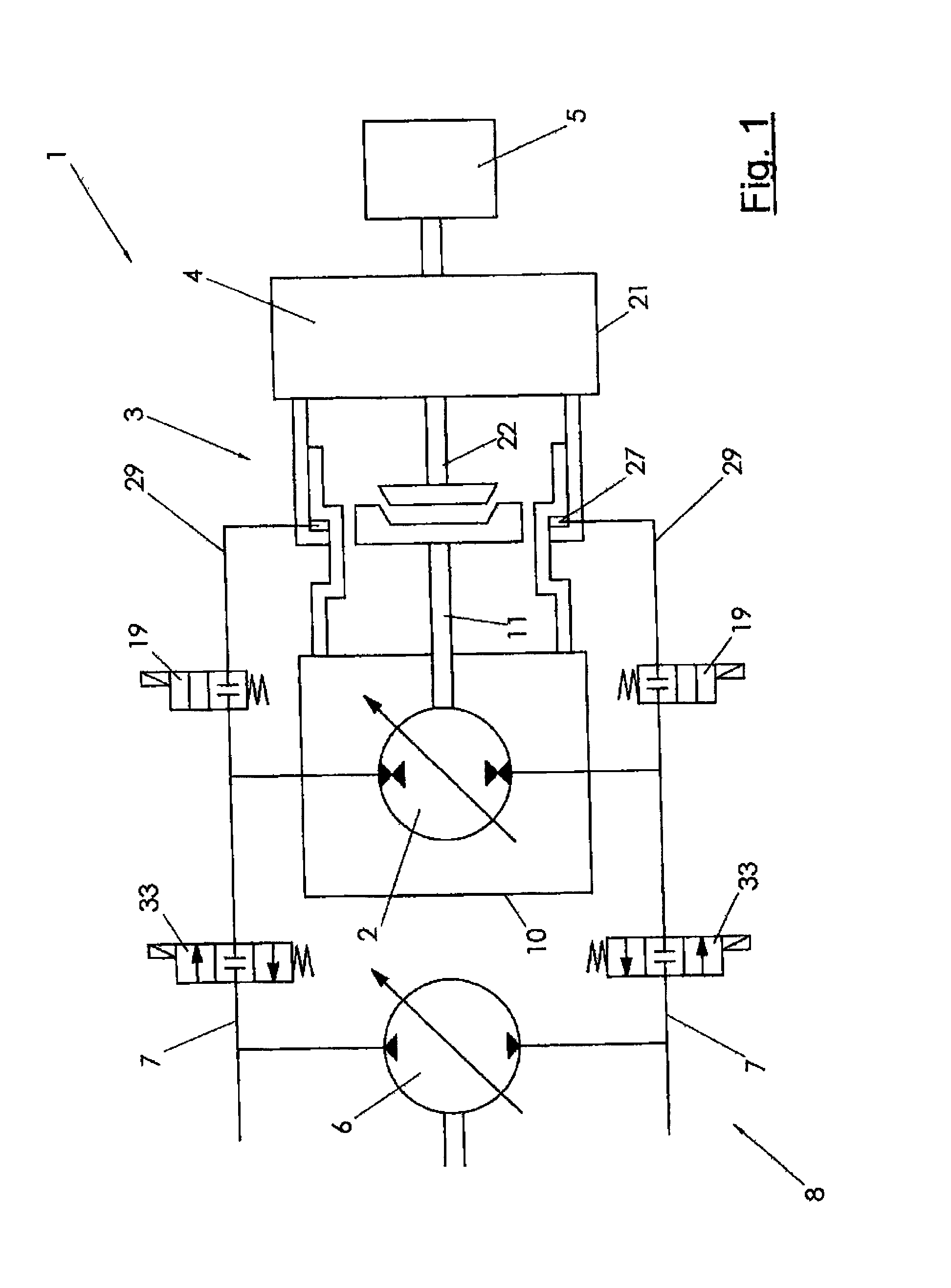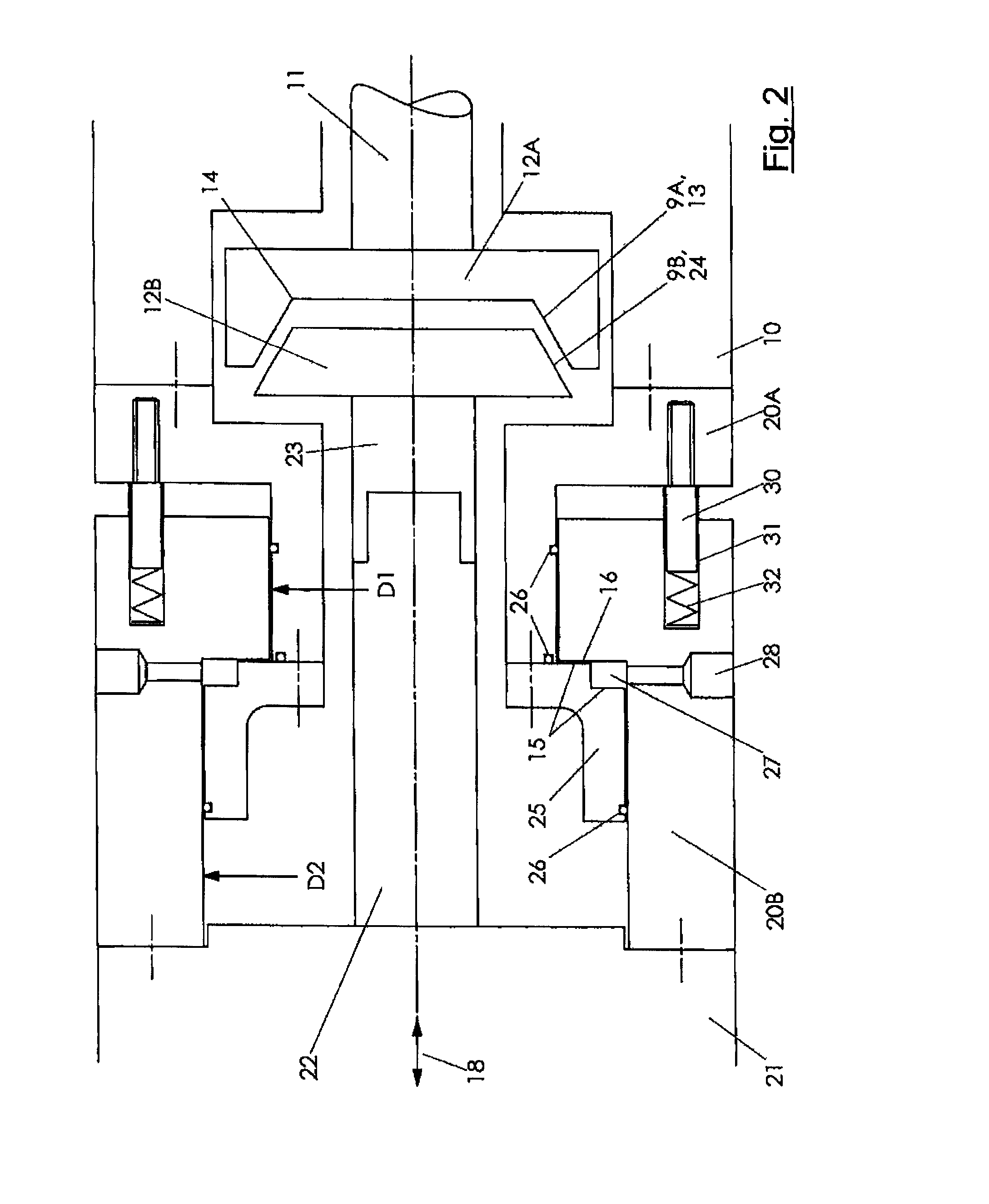Axial coupling with compensated forces
a technology of axial coupling and compensating forces, which is applied in the direction of machines/engines, braking systems, gearing, etc., can solve the problems of high cost of control and require a considerable sensor system, and achieve the effect of reducing control expenditur
- Summary
- Abstract
- Description
- Claims
- Application Information
AI Technical Summary
Benefits of technology
Problems solved by technology
Method used
Image
Examples
Embodiment Construction
[0035]The embodiments described below are shown in an exemplary manner as connectable hydraulic units by way of a hydraulic motor, but are also applicable in an analogous manner to connectable hydraulic pumps, it being possible to realize both types of hydraulic machines as fixed displacement units or variable displacement units, the direction of rotation of which is reversible. In this case, hydraulic units which can act both as pump and as motor are also included.
[0036]FIG. 1 is a strongly schematic representation of a drive train 1 according to the invention which is part of a drive system of an operating machine with a hydraulic drive. The drive train includes, for example, a motor 2 which is preferably realized as a variable displacement hydro-motor and which is supplied with hydraulic fluid (hydraulic oil) by a variable displacement pump 6. The variable displacement pump 6 is, for example, driven by an internal combustion machine (not shown) and supplies a flow of hydraulic fl...
PUM
 Login to View More
Login to View More Abstract
Description
Claims
Application Information
 Login to View More
Login to View More - R&D
- Intellectual Property
- Life Sciences
- Materials
- Tech Scout
- Unparalleled Data Quality
- Higher Quality Content
- 60% Fewer Hallucinations
Browse by: Latest US Patents, China's latest patents, Technical Efficacy Thesaurus, Application Domain, Technology Topic, Popular Technical Reports.
© 2025 PatSnap. All rights reserved.Legal|Privacy policy|Modern Slavery Act Transparency Statement|Sitemap|About US| Contact US: help@patsnap.com



